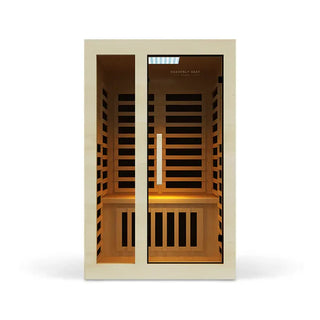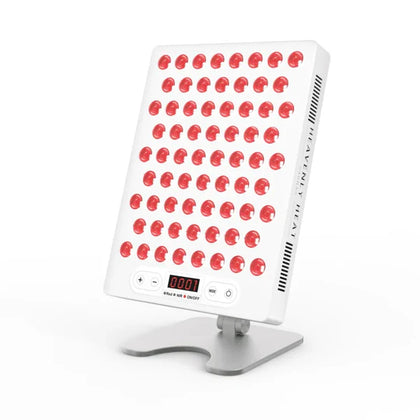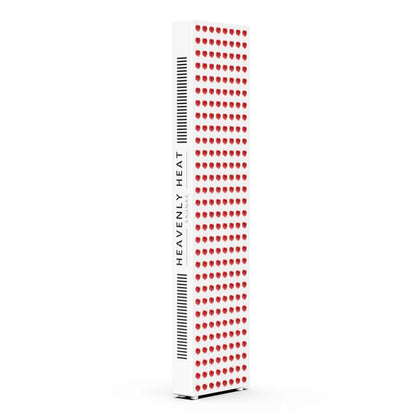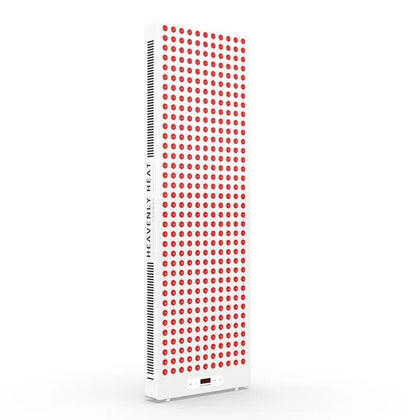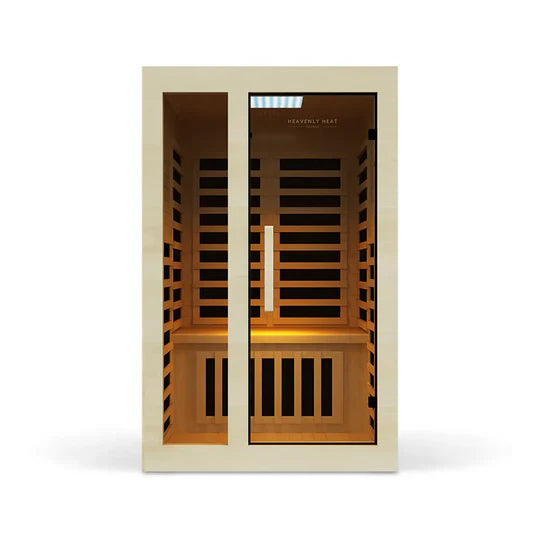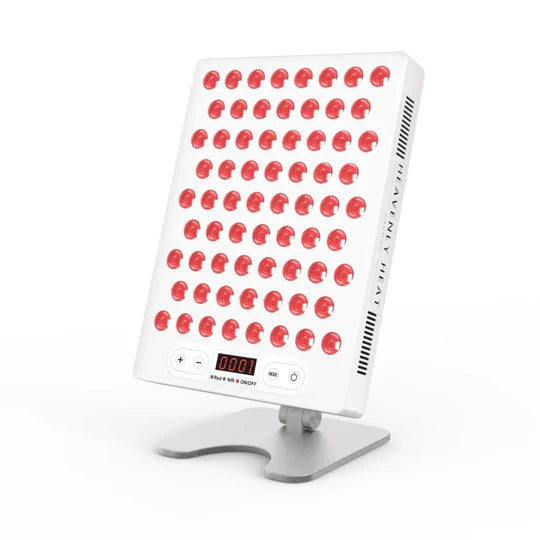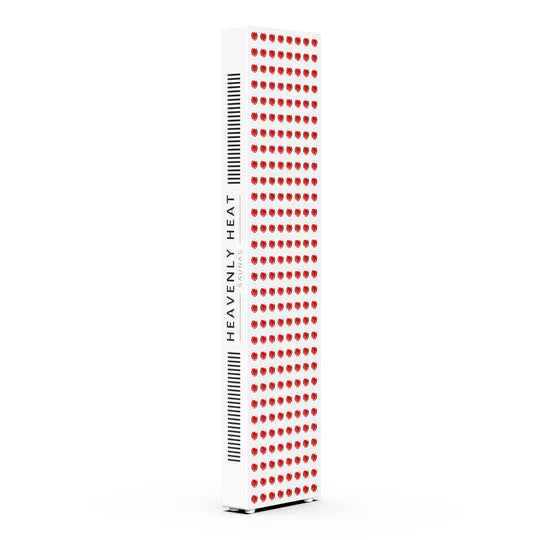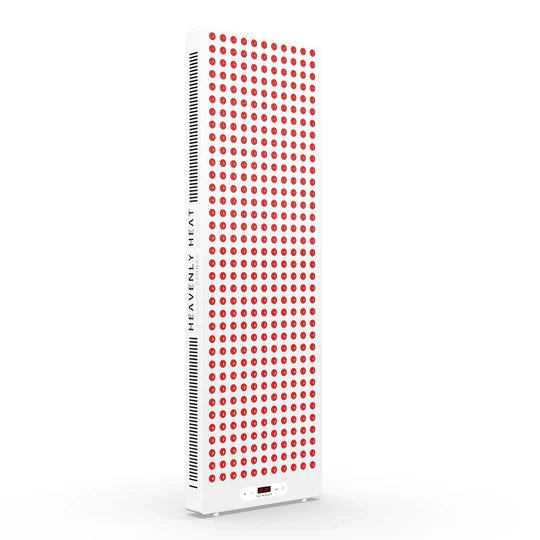Does Red Light Therapy Help Depression?
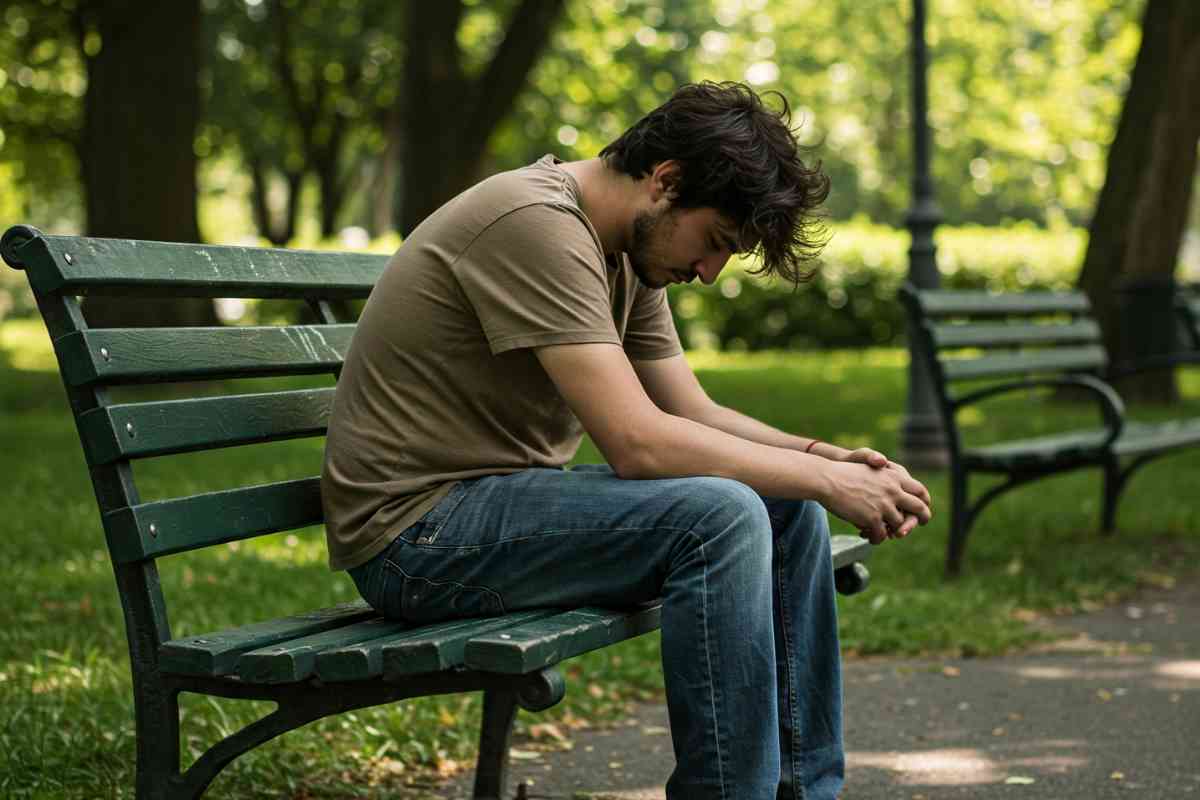
Fatigue, hopelessness, sleep issues, and lost interest in life, these are just a few symptoms of depression that can make daily living feel unbearable.
But ignoring them isn’t just painful, it can be dangerous. As traditional treatments don't work for everyone, many are asking: Does red light therapy offer real hope for relief? Let’s explore the possibilities.
Table of contents
Key Takeaways
Boost Mood Naturally: Red light therapy increases serotonin and endorphins, promoting emotional stability.
Enhance Brain Function: It stimulates brain activity and reduces inflammation, improving focus and mental clarity.
Improve Sleep Quality: Regular use can help regulate sleep patterns, supporting better mental and emotional health.
Long-Term Benefits: Red light therapy may stimulate new brain cell growth for lasting cognitive improvements.
Consult Your Doctor: Always speak with a healthcare provider before starting red light therapy, especially if you're on medication or have health conditions.
What is Depression ?
Harvard Health Publishing explains that depression is more than fleeting sadness—it's a serious mood disorder that deeply affects how a person thinks, feels, and functions daily. Unlike temporary emotional lows, depression often lingers and interferes with one's ability to enjoy life.
Several key factors contribute to depression:
Biological factors: Imbalances in brain chemistry and poor communication between nerve circuits can affect mood regulation.
Psychological and social stressors: Trauma, unemployment, loss, or chronic stress increase vulnerability.
Genetics: A family history of depression can heighten personal risk.
Medical illnesses and medications: Up to 15% of depression cases stem from physical conditions or side effects of medication.
Lifestyle choices: Physical inactivity, alcohol misuse, and poor sleep can both contribute to and worsen symptoms.
Chronic disease: Managing conditions like diabetes or heart disease can trigger or exacerbate depression.
Left untreated, depression can sap energy, strain relationships, impair concentration, and diminish pleasure in everyday life. However, help is available. A practical and hopeful strategy involves combining psychotherapy, medication, and lifestyle adjustments like regular physical activity. Even light therapy helps in seasonal depression. With support and the right treatment, most people experience substantial relief and a return to fulfilling routines.
THE SCIENCE BEHIND RED LIGHT THERAPY AND DEPRESSION
Depression can make life feel heavy, low mood, tiredness, and no joy in the things you love. Red light therapy, also called photobiomodulation (PBM), uses safe, gentle light to help lift some of these symptoms.
It works by targeting certain parts of the brain to boost mood without any surgery or drugs. A recent study in 2024 , looked at 11 different trials with many people battling depression.
The results were clear: red light therapy helped reduce depression symptoms in a noticeable way. People felt better and more hopeful after treatment.
The study also found that using the right kind of light and treatment schedule made a big difference in how well it worked.
The researchers said, “PBM helps reduce depression symptoms,” but they also remind us that more research is needed to understand its full potential.
The best part? No one in the studies reported bad side effects, which means red light therapy is safe to try.
Still, it’s important to remember that this isn’t a cure, but it could be a helpful tool in your fight against depression.
How Does Red Light Therapy Work for Depression?
Boosts Brain Activity to Improve Mood, Focus, and Mental Clarity
Red light therapy stimulates brain activity by boosting energy production in brain cells.
This increase in ATP helps improve mood regulation, enhances emotional balance, and reduces feelings of mental fog, making it easier to stay focused and maintain clarity throughout the day.
Increases Serotonin and Endorphins to Naturally Elevate Mood Levels
Red light therapy helps with depression by boosting your brain’s feel-good chemicals, serotonin and endorphins.
When these natural mood-lifters go up, you feel calmer, more positive, and better able to handle stress.
That’s why low levels often lead to low mood or depression. One study published in Experimental Biology and Medicine , looked at people using low-level laser therapy and found something interesting.
Just three days after treatment, their serotonin levels went up, and their pain dropped by over 60%. The therapy also improved blood flow, which helps your brain work better.
These results show how red light therapy can naturally lift your mood and support mental well-being.
Reduces Inflammation Linked to Depression and Brain Fog Symptoms
Red light therapy helps with depression by calming inflammation in the brain, which can cause symptoms like brain fog, low energy, and low mood.
When red light shines on your skin, it reaches your cells and helps them make more energy while also lowering harmful stress in the body.
One study showed that , red and near-infrared light helped reduce brain inflammation by boosting healing and balancing the immune response.
Another study found that , red LED light eased pain and swelling in animals by calming nerves and blocking pain signals. This may explain why it helps your brain feel better too.
Improves Sleep Quality to Support Emotional and Cognitive Balance
One way red light therapy may help with depression is by improving your sleep. When you sleep well, it’s easier to manage your emotions, think clearly, and feel balanced, things that often feel out of reach during depression.
Red light helps your body produce more melatonin, the hormone that tells your brain it’s time to sleep.
In a study from the Journal of Athletic Training , athletes who used red light therapy for 30 minutes each night slept better and had higher melatonin levels after just two weeks.
Better sleep can boost your mood and mental clarity, making it easier to handle the ups and downs of daily life.

Enhances Blood Circulation to Nourish Brain and Reduce Fatigue
Better blood flow means a healthier brain, and that’s a big deal when it comes to depression. When your brain gets more oxygen and nutrients, it works better, feels less tired, and helps lift your mood.
Red light therapy makes this happen by opening up blood vessels and getting circulation moving. One study in the Journal of Photochemistry and Photobiology , showed that 670 nm red light triggers your blood vessels to release tiny messengers called RSNOs.
These messengers help relax the vessels and boost blood flow. So, by feeding your brain and cutting down fatigue, red light therapy supports both mental clarity and emotional balance.
Stimulates Growth of New Brain Cells for Long-Term Mental Health
Red light therapy may promote neurogenesis, the process by which new neurons are formed in the brain, supporting the creation of new brain cells and improving long-term cognitive function and emotional balance.
Other Therapies that help with Depression
Exercise
Feeling low and stuck in your head? Moving your body might be the best way out. Exercise helps fight depression by boosting feel-good brain chemicals like serotonin and endorphins.
It also gives you a sense of control and achievement. A huge study looked at over 14,000 people and found that walking, jogging, yoga, and strength training can ease depression just as well as meds or therapy.
Another review showed that adding exercise to treatment plans helps many patients feel better faster. So yes, exercise really can lift more than just weights.
Meditation
Meditation helps calm the mind and breaks the cycle of negative thinking that fuels depression. It teaches people how to focus on the present, manage emotions better, and ease mental stress.
During the COVID-19 pandemic, researchers reviewed 26 studies and found that mindfulness meditation lowered depression symptoms in many people.
Another review looked at 18 studies with over 1,100 patients and saw clear improvements, even for those with serious depression. These results show that meditation isn’t just relaxing , it can be a real tool to fight depression.
Music Therapy
Music therapy gives people with depression a safe space to express feelings that words often can’t capture.
Through singing, playing instruments, or creating music with a therapist, they release emotions and build a strong connection.
A Cochrane review looked at nine studies and found that people who added music therapy to their usual treatment felt much better emotionally.
In another study from Finland, patients who interacted more musically with their therapists, especially during the middle sessions, saw the biggest improvements in their depression symptoms.
Blue Light Therapy
Blue light therapy helps fight depression by fixing your body’s natural sleep-wake cycle, also called the circadian rhythm.
When this rhythm gets off track, like during the dark winter months, it can lead to low energy, poor sleep, and a depressed mood.
Blue light works fast because your brain responds strongly to it, especially in the morning. In fact, a study published in the Journal of Affective Disorders (2012) found that blue-enriched light therapy reduced depression symptoms in people with Seasonal Affective Disorder, with up to 75% of patients showing real improvement.
Green Light therapy
Green light therapy works by using a specific color of light that may help boost mood and reduce symptoms of depression. It’s thought to affect the parts of the brain that control how we feel.
In one study , people with seasonal depression felt much better after using green light every morning for a week more than they did with red light.
Another study , looked at older adults and found green light was safe and easy to use, though stronger light might be needed for better results. These findings show green light therapy could be a helpful option for some people.

What Happens in the Brain During Red Light Therapy?
- Red Light Therapy Activates Brain's Energy Production: When red light therapy reaches the brain, it activates mitochondria, the energy-producing structures within brain cells. These mitochondria convert chemicals into adenosine triphosphate (ATP), a crucial fuel for healthy cellular function.
- Red Light Therapy Reduces Energy Blockage and Oxidative Stress: The light stimulates cytochrome c oxidase, a protein that helps complete this energy process by converting oxygen and hydrogen into water. In stressed or low-oxygen cells, nitric oxide can interfere by binding to cytochrome c oxidase, slowing down energy production. Red light therapy helps reduce this interference and combat oxidative stress, which is linked to depression and neurodegenerative conditions.
- Red Light Therapy May Support Brain Health and Mood: An estimated 280 million people globally live with depression, including 5% of adults and nearly 6% of seniors (WHO). Red light therapy may protect neurons, slow cognitive decline, and stimulate brain-derived neurotrophic factor (BDNF), which supports mood regulation and learning.
- Red Light Therapy Balances Neurotransmitters for Emotional Stability: Red light therapy balances key neurotransmitters like serotonin and dopamine, essential for emotional stability. This process, known as photobiomodulation (PBM), enhances blood flow, reduces inflammation, and promotes the growth of new brain cells.
- Red Light Therapy May Alleviate Depression Symptoms: Research shows that PBM's benefits for depression stem from its ability to stimulate the brain's energy production and reduce inflammation, key factors in alleviating symptoms of depression.

How Soon Can You Expect Results from Red Light Therapy for Depression?
Noticeable improvements typically start within 1 to 2 weeks of consistent use. Most people experience a real difference after 8 to 12 sessions.
While immediate effects like relaxation or alertness may occur, deeper changes in mood and emotional stability take time to develop.
Is Red Light Therapy Safe to Use for Depression?
- Red light therapy is safe to use every day for depression: You can safely use red light therapy daily without worrying about harmful side effects like you would with UV light. It’s gentle on the body and doesn’t build up dangerous exposure.
- Some people may feel slight discomfort during or after use: Even though it’s safe, a few users might notice eye strain or skin irritation, especially if they use the device too close or for too long. This usually goes away quickly.
- People with sensitive health conditions should start slow: If you have a condition that makes you more sensitive to light or heat, it’s smart to begin with short sessions and see how your body reacts before doing more.
- Talk to your doctor if you’re taking antidepressants: If you’re already on medication for depression, ask your doctor before starting red light therapy. This helps avoid any unwanted interactions or side effects.
Could Red Light Therapy Potentially Worsen Depression in Some Cases?
- Some People Can Feel Worse After Using Red Light: Red light therapy might seem helpful, but for certain people, especially those with mental health challenges, it can actually make things worse.
- People With Bipolar Disorder Should Be Extra Careful: If you have bipolar disorder, this type of therapy could cause mood swings or even trigger a manic episode.
- Using the Light Too Much Can Mess With Your Mind: Spending too long under red light or jumping into it too fast can lead to mental overstimulation and may worsen symptoms.
Should You Consult a Doctor Before Starting Red Light Therapy?
It’s recommended to speak with your doctor before starting red light therapy, especially if you have certain health conditions or are on medication.
Your doctor can help determine if it's suitable for you and guide you on how to integrate it with your overall treatment plan.
Is It FDA Approved for Depression Treatment?
Currently, the FDA has not approved red light therapy specifically for depression. However, it remains an off-label treatment, meaning many people use it outside FDA approval with positive outcomes.
Off-label use refers to using a treatment in a way not specified in FDA approval. Ongoing studies may lead to future approval.
How to Use Red Light Therapy for Depression at Home?
Choose a Red Light Device with the Right Wavelength and Power
Select a device that operates within the ideal wavelength range of 600–900nm, with 660nm and 850nm being common for mood improvement.
660nm and 850nm are popular wavelengths, known for their ability to improve mood and stimulate brain function.
The device should have adequate power to penetrate the skin and stimulate the brain effectively.
Set Up in a Quiet, Comfortable Spot Free from Distractions
To maximize the benefits of red light therapy, use the device in a calm, quiet environment.
A distraction-free setting helps you focus on the session and enhances its therapeutic effects.
Adding meditation or mindfulness practices during the session can amplify these benefits, improving pain relief, promoting better sleep, and boosting mental well-being.
Position the Light Close Enough to Target Your Face or Body
Ensure the device is positioned 6-12 inches from your body to target the skin and brain effectively.
Depending on the device’s power and the distance, each session typically lasts between a few minutes to around 10 minutes.
Adjusting the distance allows for optimal light exposure and ensures the treatment area receives the right amount of energy.
Use the Light Therapy Device Early in the Morning for Best Effects
- Use Red Light Therapy in the Morning to Boost Your Energy: For optimal results, use red light therapy in the morning to help regulate your circadian rhythm, which controls physical, mental, and behavioral changes over a 24-hour cycle, boosting focus and energy throughout the day.
- Stick to a Daily Routine for Best Results: Make red light therapy a daily habit to see long-term benefits. Consistency is key, and using it at the same time each day will help you get the most out of the therapy.
Combine Red Light Therapy with Other Proven Depression Treatments for Support
Red light therapy can complement treatments like medication or therapy, boosting their effectiveness by promoting brain health and emotional stability.
How Does Red Light Compare to Blue Light for Depression?
Red light therapy uses longer wavelengths, which penetrate deeper into the brain and help regulate mood more effectively over the long term.
Blue light primarily affects circadian rhythms and may be better for treating seasonal affective disorder (SAD). However, red light is often more consistent for ongoing mood improvement.
FAQs
Can Red Light Therapy Be Used Alongside Antidepressant Medications?
Red light therapy can be used alongside antidepressants to potentially enhance their effects. Always consult with your doctor before combining treatments to ensure safety and effectiveness.
Are There Specific Wavelengths of Red Light That Are More Effective for Depression?
Wavelengths between 600-900nm are commonly researched, with 630-660nm showing particular promise for mood regulation and depression relief.
How Long Should Each Red Light Therapy Session Last for Depression?
Sessions typically last 10-20 minutes. The duration may vary depending on the intensity of the light and individual response, but consistency is key.
Can Red Light Therapy Help with Seasonal Affective Disorder (SAD) as Well?
Yes, red light therapy is beneficial for SAD by regulating circadian rhythms and improving sleep quality, while also boosting serotonin levels to help alleviate depressive symptoms.




